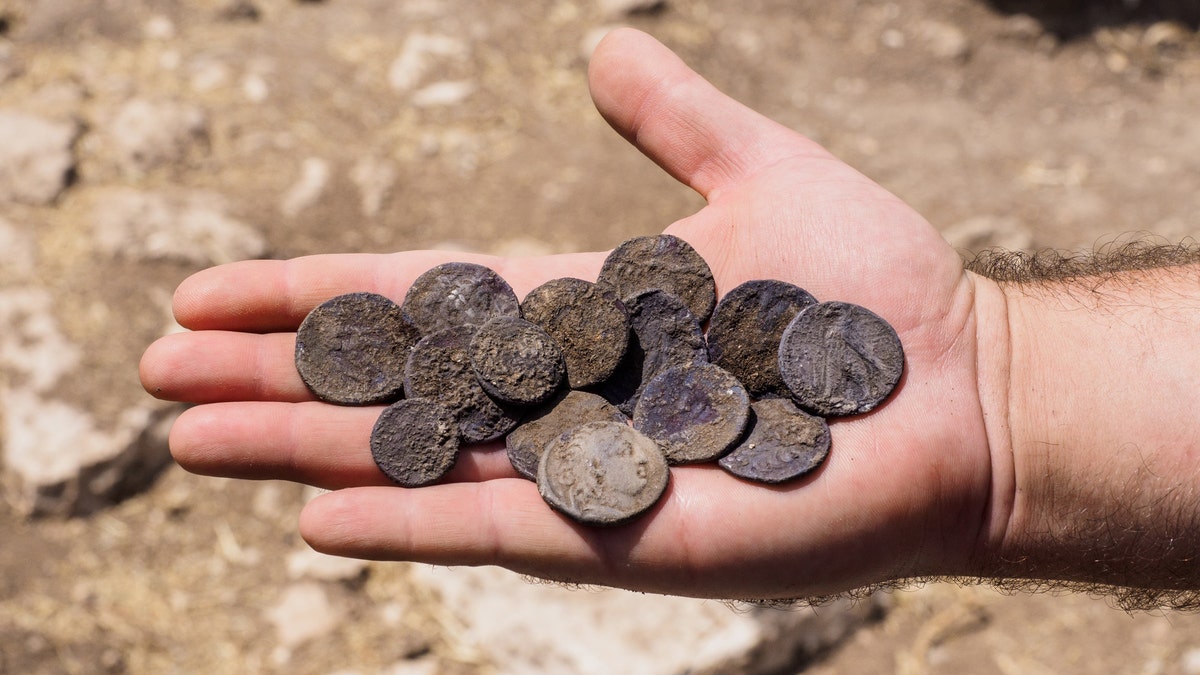
The cache of silver coins found at the estate house. (Photographic credit: Assaf Peretz, courtesy of the Israel Antiquities Authority)
If you’re the person who stashed a cache of silver coins in a rock crevice near Modi’in in Israel, we have great news.
Your coins have been found — only 2,140 years after you hid them.
Archaeologists uncovered the coins in April during an excavation prior to the construction of a neighborhood.
The coins, from the Hasmonean period, are “shekels and half-shekels that were minted in the city of Tyre and bear the images of the king, Antiochus VII, and his brother, Demetrius II,” said Avraham Tendler, director of the excavation, on behalf of the Israel Antiquities Authority.
Related: Team testing new scanner on Egypt's Great Pyramid
“The cache that we found is compelling evidence that one of the members of the estate who had saved his income for months needed to leave the house for some unknown reason. He buried his money in the hope of coming back and collecting it, but was apparently unfortunate and never returned.
“It is exciting to think that the coin hoard was waiting here 2,140 years until we exposed it.”
The coins were found on what was once an agricultural estate where a Jewish family planted olive trees and vineyards, Tendler said. An olive press and storehouses for olive oil are currently being uncovered in an industrial area next to the estate.
Sixteen silver coins were found, one or two from every year between 135 and 126 BC, said Dr. Donald Tzvi Ariel, head of the coin department at the Israel Antiquities Authority.
Related: Underwater 'lost city' not a city at all
“It seems that some thought went into collecting the coins, and it is possible that the person who buried the cache was a coin collector,” Ariel said. “He acted in just the same way as stamp and coin collectors manage collections today.”
The excavators also found many bronze coins bearing the names of Hasmonean kings, indicating that the estate continued to operate throughout the Early Roman period.
The coins were stamped “Year Two” and contained the slogan “Freedom of Zion,” suggesting that the residents of the estate took part in the first revolt against the Romans in 66 AD.
Related: Study confirms King Tut's dagger was made with iron from a meteorite
The artifacts will be preserved in an archaeological park when workers are done building the neighborhood — unless someone comes forward to prove he’s the one who hid them there more than two millennia ago.
